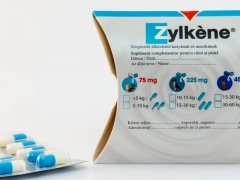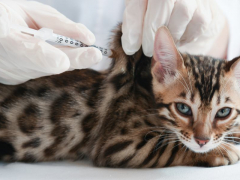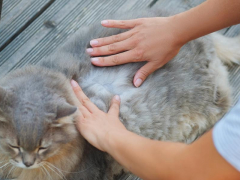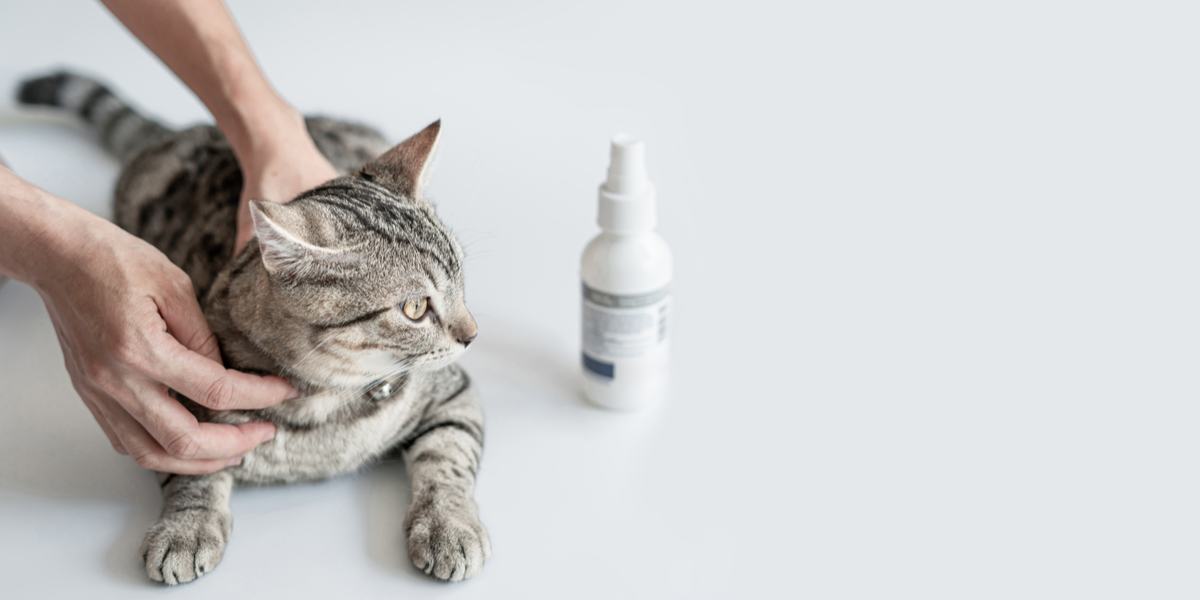
Tresaderm is the brand name for a topical solution medication containing thiabendazole, dexamethasone, and neomycin sulfate that is manufactured by Merial Animal Health, now a part of Boehringer Ingelheim Animal Health.
In this article, you’ll learn what Tresaderm is, the types of conditions it is used to treat, side effects to monitor for, and some frequently asked questions.
Tresaderm for Cats Overview

About Tresaderm for Cats
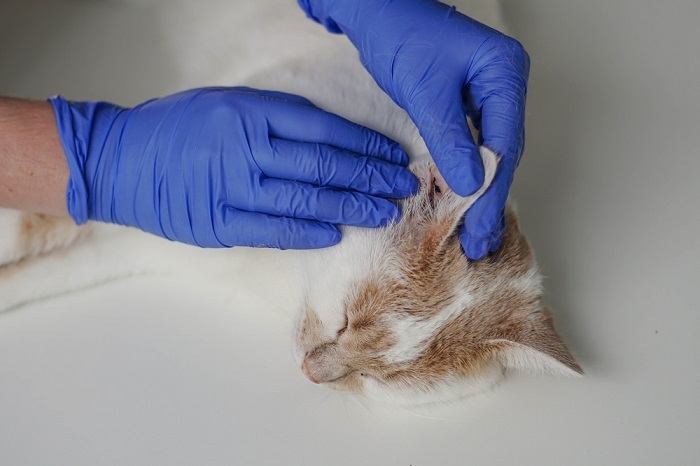
Tresaderm is a triple medication that combines the three active ingredients—thiabendazole, dexamethasone, and neomycin sulfate—for topical application to the skin and ears.
Thiabendazole is an antifungal agent that has efficacy against fungal organisms that cause ringworm (dermatophytosis), namely Microsporum and Trichophyton species. It is also effective against fungal yeast organisms like Malassezia that can overgrow, causing skin and ear infections.
Neomycin is an antibiotic that can be used topically to treat superficial bacterial infections on the skin and in the ears, especially Staphylococcus, Proteus, and Pseudomonas bacteria.
Dexamethasone is a corticosteroid that acts as an anti-inflammatory to reduce redness, swelling, and itching of the skin and ears.
By combining these three agents, Tresaderm is capable of treating with a single application skin and ear disorders that involve a combination of bacterial and fungal organisms along with itching and inflammation.
What Does Tresaderm Do for Cats?
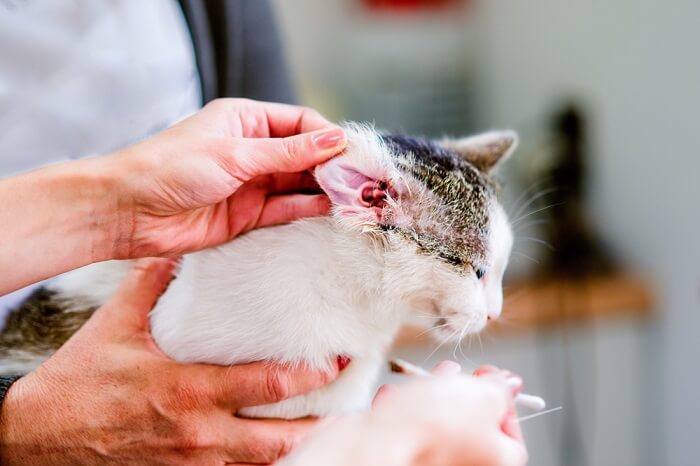
Tresaderm is labeled by the FDA for use in cats to treat infectious and inflammatory conditions of the skin, ears, and anal glands.
Tresaderm is used most commonly in cats to treat fungal yeast overgrowth in the ears of cats, which can be very itchy and irritating. Cats may develop yeast overgrowth commonly as a symptom of allergies, but this can also occur secondary to ear mites.
Ear mites are a common issue in cats, especially in young kittens. The thiabendazole in Tresaderm acts to kill the mite eggs so that new mites cannot hatch, limiting infestations.
Tresaderm can also be used for just about any topical skin infection or other skin disorder involving superficial inflammation, as long as it is a smaller, more focused area. This includes small, isolated areas of fungal ringworm.
While there are many ear medications available in veterinary medicine, very few carry a label for use in cats, and Tresaderm is one of those medications.
Side Effects of Tresaderm for Cats
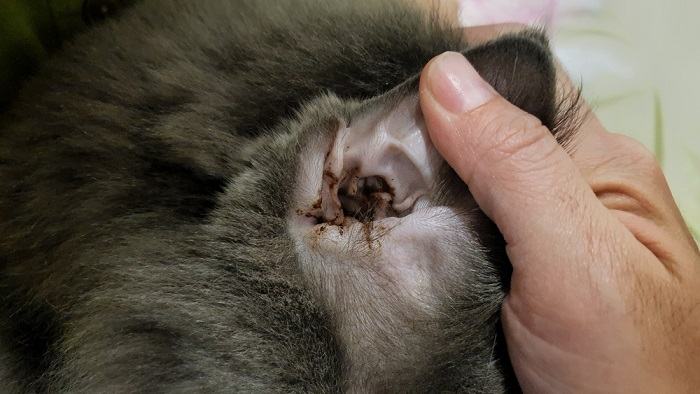
Tresaderm can treat yeast overgrowth in the ears, which may occur due to allergies or if the cat has ear mites.
Fortunately, adverse effects from use of Tresaderm are uncommon when it is used correctly and as prescribed by a veterinarian.
Tresaderm is not intended for use in the eyes and it is very important to avoid getting any of this medication in a cat’s eyes, especially if treating any lesions around the nose or eyelids.
Some cats can have a sensitivity to the antibiotic component, neomycin. This may present as seeing more irritation and inflammation at the site of application. This is much less common when neomycin is combined with a steroid like dexamethasone, as in the case of Tresaderm.
If any kind of condition worsening is seen at the site of application, the best thing to do is to discontinue using the medication and contact your veterinarian. Bathing or washing the area with dish soap or a pet safe shampoo can help to remove any medication remaining on the skin.
Because Tresaderm must be stored in the refrigerator, it is colder on application. Some cats will act sensitive to application of the medication because of the coldness of it alone. Keep this in mind when applying it. If you’re not sure if your kitty is sensitive to application because of this or because of a true skin or allergic sensitivity, make sure to contact your veterinarian.
While also uncommon, use of topical steroid medications can sometimes lead to systemic side effects, as would be seen if a cat was getting an oral steroid. Classically, these signs can include increased drinking, urination, and appetite.
Tresaderm is not intended for prolonged use for any conditions, but if it is used in that manner, there is a greater likelihood of seeing such side effects. Long-term steroid use in cats has also been connected to diabetes and heart failure.
Again, these effects are unlikely with topical medication, but may occur if a topical product is used at higher doses, if lots of medication is used on multiple or large areas of the body, or if it is used for prolonged periods.
Any skin or ear infection that appears to be getting worse instead of better on Tresaderm may not be related to a side effect of the medication but instead indicates that the antibiotic or antifungal in Tresaderm is ineffective against the organisms present. This would indicate a need to have an infection rechecked by your veterinarian.
When used as an ear medication, it’s always important to monitor for signs of hearing loss, progressive or worsening ear pain, a head tilt, and/or walking in circles. This is the case when using any ear medication. These signs can indicate that the eardrum has been compromised and most ear medications are not appropriate to use in cases where the eardrum is not intact.
The integrity of the eardrum is often checked by your vet during an exam, but may not always be possible depending on pain or discomfort of the ear at the time of exam, as well as how sensitive a kitty is to having the ears examined.
If you are ever concerned that your kitty may have developed side effects while using Tresaderm, or if an overdose is suspected, contact your veterinarian, the ASPCA Animal Poison Control Center (1-888-426-4435) or Pet Poison Helpline (1-855-764-7661) immediately for further advice.
Tresaderm for Cats Dosage
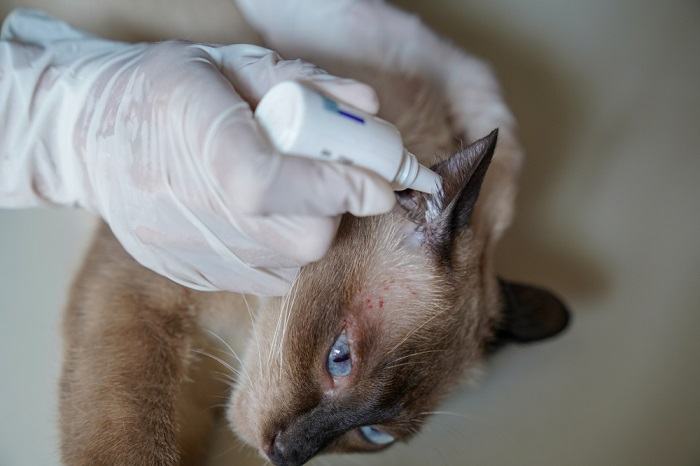
When using Tresaderm, be sure to follow the dosage and application instructions provided by your veterinarian.
Unlike most topical medications, Tresaderm must be stored in the refrigerator.
According to the manufacturer, the skin or ear should be clear of any debris or discharge. For use in the ears, five to 15 drops should be instilled into the ear canal every 12 hours, depending on the severity of an ear condition. The dropper bottle is designed to fit comfortably into the outer opening of the ear canal.
When being used to treat an area elsewhere on the skin, the manufacturer recommends ensuring that an affected area is well-moistened with Tresaderm solution, using roughly two to four drops per square inch every 12 hours.
Most ear and skin conditions should be treated for at least 10 to 14 days, but it is very important to have affected areas of the skin and ears rechecked by your veterinarian, as longer courses of medication are sometimes needed. Cases of ringworm fungal infections usually require at least four to six weeks of treatment.
If your veterinarian diagnosed a particular skin or ear condition using certain testing, such as a cytology, culture, or polymerase chain reaction (PCR), you should never discontinue treating a condition just based on how it looks. Rechecking a condition with that original testing method is important to verifying the condition is truly resolved.
Conclusion
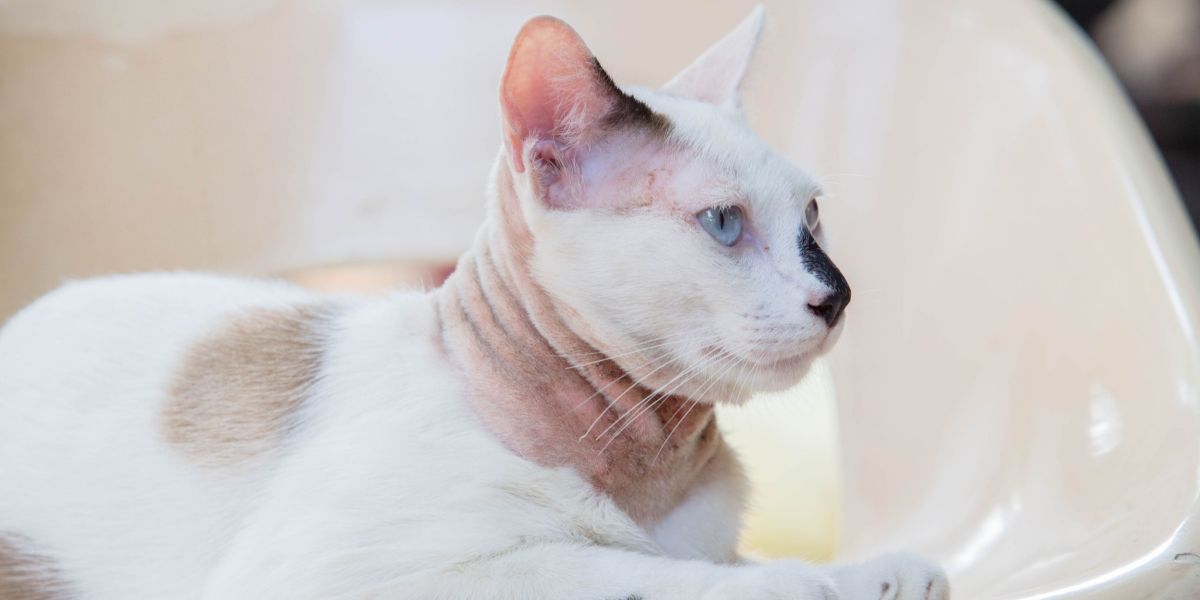
Tresaderm is a very useful topical medication that is labeled for use in cats for treating a variety of infectious and inflammatory conditions of the skin and ears. As with any topical solution, treatment is usually for smaller affected areas.
Tresaderm needs to be refrigerated, making it cold during application, which can bother some sensitive cats, especially when treating the ears. Some cats may have an allergic sensitivity to neomycin. If any of your cat’s symptoms worsen, it’s important to check with your vet to see if this is a true side effect or if another therapy approach is needed for your kitty’s skin or ear condition.
Drug Dosing Disclaimer: We are only able to provide doses for medications that are FDA approved for use in cats and only as the label guidelines dictate. For medications that are used off-label we can only provide guidelines and safety information for use. Safe and appropriate dosing for off-label medications can only be determined by a primary care veterinarian.
We encourage you to work with your veterinarian to determine if a particular medication is appropriate for your cat. Changing or adjusting a dose for your cat on your own without consulting with a veterinarian can carry risk. We do not encourage use of medications prescribed for human use in pets without first consulting with a primary care veterinarian.
Frequently Asked Questions
What are the side effects of Tresaderm in cats?
Most common side effects may be mild redness or irritation at the application site. Some cats may have an allergic sensitivity to neomycin, the antibiotic ingredient in Tresaderm. When combined with a steroid, allergic sensitivities to neomycin are uncommon, but you should contact your veterinarian if any severe redness or irritation develops after application.
Because Tresaderm requires refrigeration, the cold feeling of its application to the skin or ears may bother some cats. Tresaderm is usually intended for use no longer than a couple weeks at a time on small affected areas.
Prolonged use or use on a very large area of the skin may lead to more systemic side effects, similar to those seen with oral steroid use. This can include excessive drinking, urinating, and appetite. Prolonged use may also increase risk for chronic skin changes, weight gain, diabetes mellitus, and heart disease.
How long do you use Tresaderm for cats?
Most topical treatments of the skin or ears will be for 10 to 14 days initially. It is important to have the condition rechecked at this interval, as some treatments may need to continue for longer. Treating fungal ringworm often requires at least four to six weeks of treatment.
If your cat continues to get recurrent skin or ear problems where the medication is being used at home for weeks or months, another underlying condition may be present that Tresaderm is not addressing sufficiently as a topical treatment so further evaluation by your veterinarian is warranted.
Is Tresaderm an antibiotic?
Tresaderm contains three ingredients, and one of them is an antibiotic, neomycin. Neomycin is effective against a few strains of bacteria that cause superficial infections on the skin and in the ears, including Staphylococcus and Pseudomonas.
Is Tresaderm used for ear mites?
Yes, Tresaderm can be used as part of a treatment plan to address ear mites in cats. The thiabendazole component, which is an antifungal, also has an effect against ear mite eggs, preventing new mites from hatching.
The medication does not however directly kill adult mites. Using Tresaderm alone for ear mites will kill them eventually as the adults die off and no new ones hatch.
However, it is common to address ear mites directly with another medication of the avermectin class, like ivermectin or selamectin (Revolution, Revolution Plus) and milbemycins like Advantage Multi or Milbemite.
